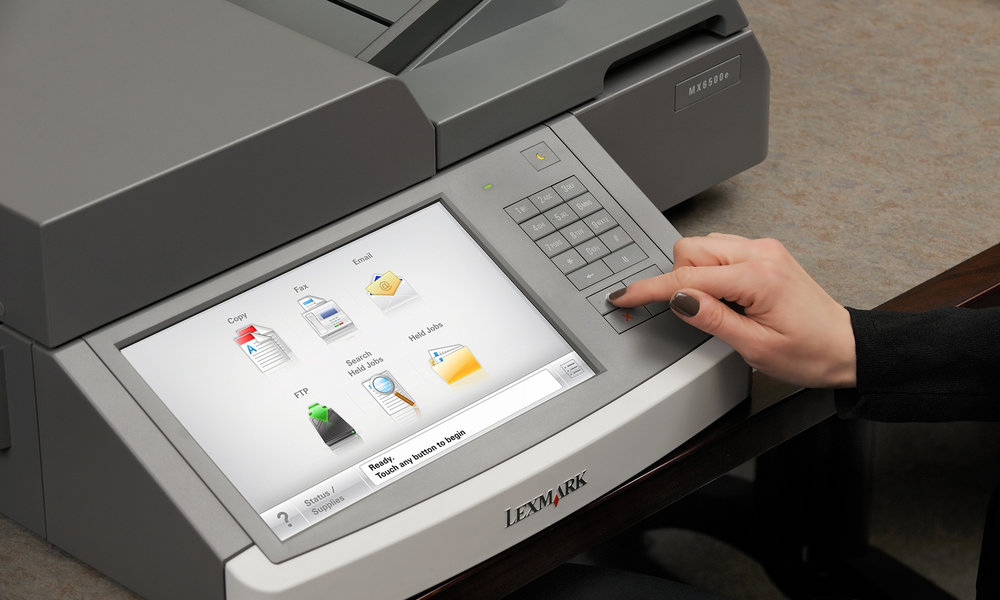
The last few months have brought about drastic changes in how and where employees work. Some people may be eager to return to the office, others may never return, and many will have the option to work hybrid, only going to the office when it makes sense to do so.
What hasn’t changed for many companies is the importance of documents in their critical processes. Highly regulated industries and those that involve a high volume of goods movement, such as financial services, healthcare and logistics, continue to rely on paper documents. Whatever the need, whether a document needs to be printed from applications running on a company server or from a work laptop, it is vital to business continuity that the user can access it from any location.
In the new world of hybrid work, employers need to enable print and scan workflows for in-office, remote and on-the-go worker scenarios. This means they need smart strategies for simplified print management to support document usage and printing in an evolving work environment. Accessibility is everything in the new business landscape where the reduction, or freeze, of benefits due to the pandemic must be rebuilt as quickly as possible. The good news is that costs can be saved with the right approach.
Simplify through the cloud
The solution to access from anywhere is the cloud. Internet printing solutions not only address the challenges of how to print when working remotely from a home office, anywhere else, or even while the employee is on the go; they also help reduce costs through a comprehensive print management strategy.
The first step is to simplify the IT service and infrastructure to successfully manage the printing of all documents, especially critical documents. A single cloud-based print management solution enables businesses to alleviate the physical infrastructure required to support the print environment, reduce internal IT demands, and provide a stable and flexible print environment.
In this scenario, instead of sending documents through a print server to a designated print device, where the pages remain in public view until retrieved, they are transferred to the cloud where they are held in a personal queue until retrieved. that the user logs in or swipes their ID at the printer, authenticating themselves as the owner of that print. This allows users to release documents from any authorized device across an entire fleet of printers wherever they are. For the ultimate in mobility, look for a cloud print management solution that offers full support for printing from Mac, Windows, and Chromebook devices, so employees can easily submit print jobs from an iPhone, iPad, or smartphone. Android smartphone or tablet.
Having access to printing from the cloud offers global yet easy control for large businesses, as well as centralized analysis of data on company and individual printing habits. This means data-driven insights can be used to improve devices and printing, as well as environmental impact, without the need for additional hardware or staff involvement.
Reducing waste is important. Documents that accumulate in a printer and end up being discarded are not only bad for the environment, but can also pose a security risk if they contain confidential or private information. When printing is hosted in the cloud, there is greater control over document output, which means less waste and less security risk. It also brings cost savings by setting user and group quotas or limiting print capacity. For example, disabling color printing so it isn’t used unnecessarily or reducing the number of employees with access to high-end devices on the network.
Process control
As companies respond to changes in working models, they have the opportunity to improve business processes, which in turn can lead to welcome cost reductions. Cloud-based print management saves hardware costs by eliminating the need for print servers. Scaling is also more cost-effective: simply add more devices and users without the need to increase physical server capacity.
Another crucial area of cost control is avoiding regulatory penalties for non-compliance. The best cloud print management solutions will enable the use of digital signatures, enterprise-wide search, authentication and auditing to ensure that companies maintain data integrity, confidentiality and accessibility, regardless of the industry they are in. operate.
Application Integration
You can also save costs thanks to useful commercial integrations. For example, being able to print directly from an application such as an ERP solution or billing and financial management software is a huge time saver. The ability to scan and capture receipt and statement information directly into an app means users can speed up the process considerably.
A great example of application integration is between Lexmark and SAP, a business application software company, whereby Lexmark’s Document Distributor can intercept data from paper documents that become part of a business process, exchange that data with the SAP system and initiate the appropriate SAP workflow. In addition, Lexmark systems can streamline printing from SAP, providing control over the format of data for printing and the security involved in document delivery, helping to eliminate significant waste.
If it’s profitable, it helps, and in today’s rapidly changing world of work, Internet-enabled printing solutions and a comprehensive approach to print management can help businesses and organizations make up lost ground in supporting a hybrid workforce. and, at the same time, help reduce costs.




